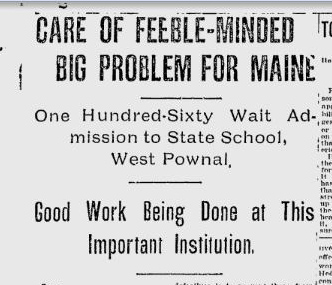Just six years after the institution opened, a headline announced “Care of Feeble-Minded Big Problem for Maine.” The facility already had 255 people receiving care, with 160 on a waiting list.

Dr. Carl S. Hedin, who took over as superintendent in 1912, said the “feeble-minded” still in the community were “harmful and dangerous … as they are able to reproduce their kind.” Their offspring, the theory went, would add to “feeble-mindedness, insanity, crime, pauperism, intemperance and prostitution” in the state.

Those beliefs and policies that followed them persisted into the 1940s, propelled by Social Darwinism and eugenics, ideas that grew out of increasing immigration, urbanization, and industrialization in the late 19th and early 20th centuries. Persons were “committed” to the institution, kept behind locked doors, and were unlikely to leave.
For the Maine School for the Feeble-Minded, those beliefs led to fear of and discrimination against people who were different – cognitively, ethnically, socio-economically – and to decades of committing thousands of disabled persons in Maine and elsewhere to large institutions, where some persons education and learned skills, but where many were provided only custodial care.


